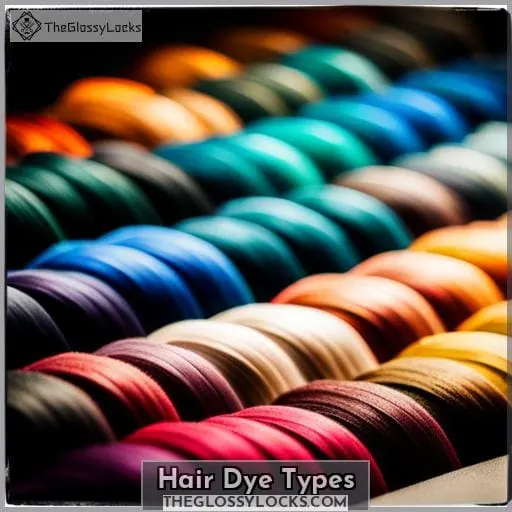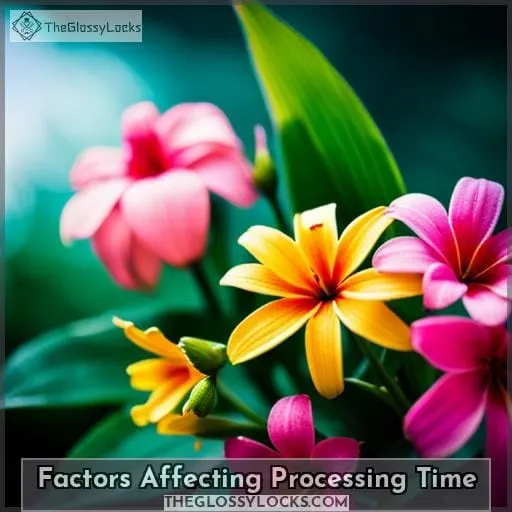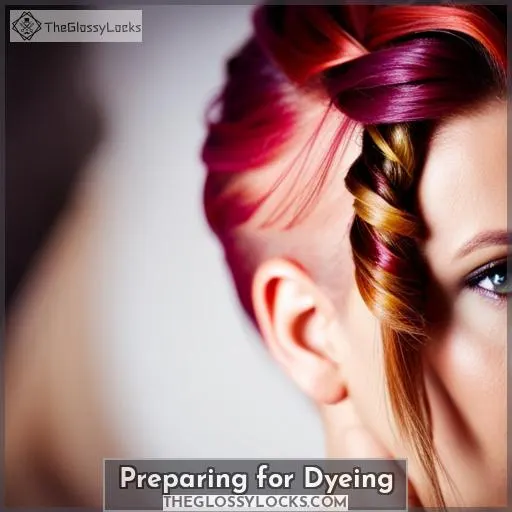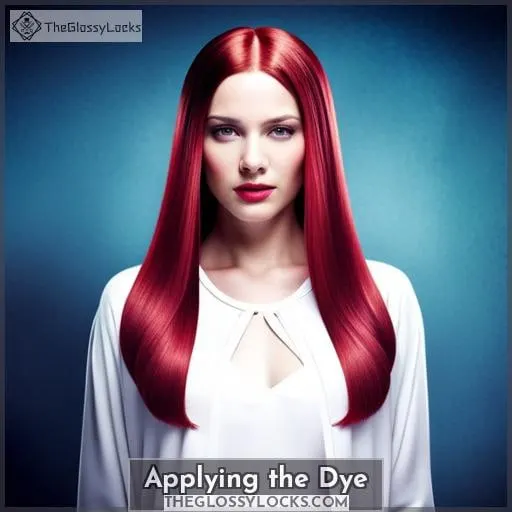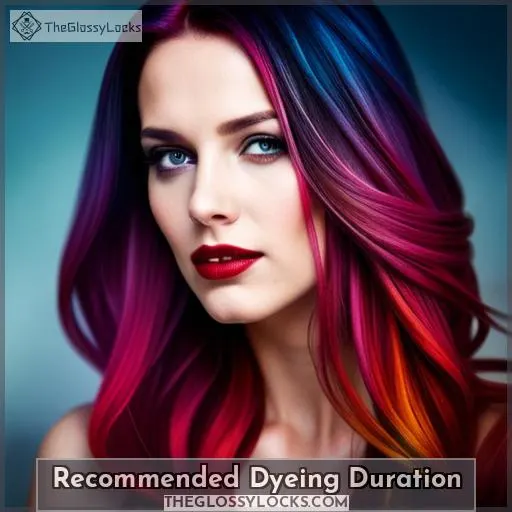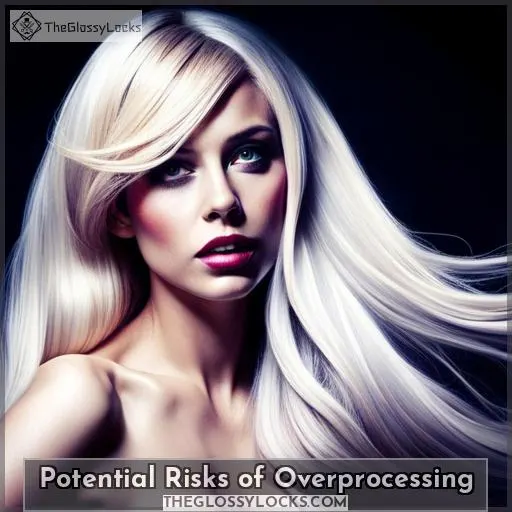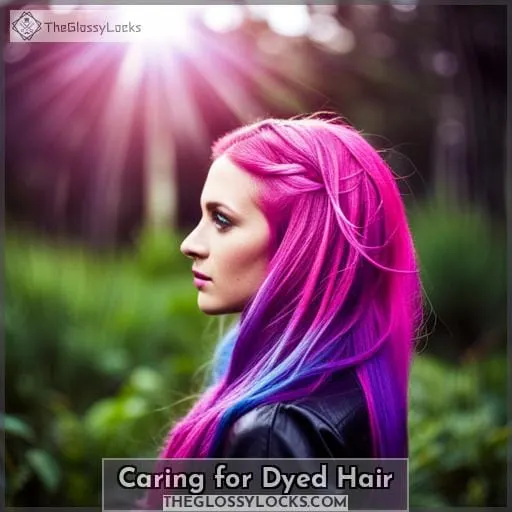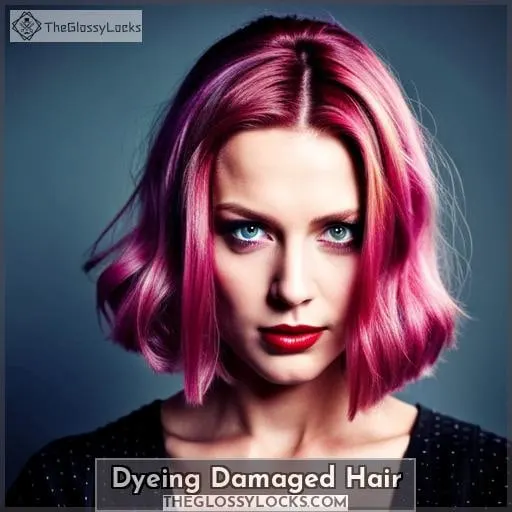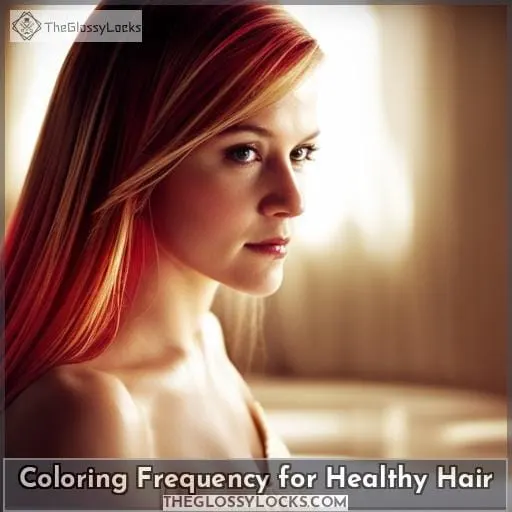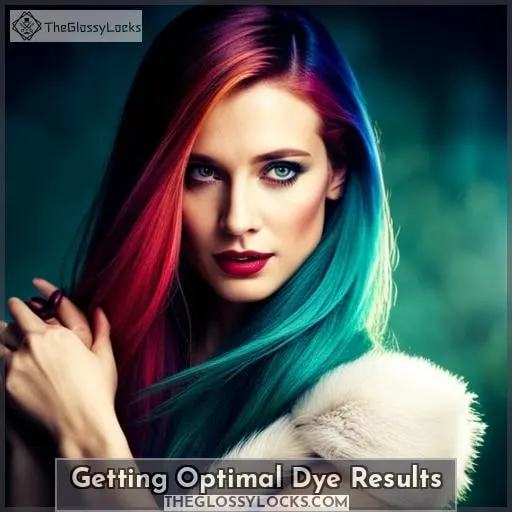This site is supported by our readers. We may earn a commission, at no cost to you, if you purchase through links.
 Want better hair dye results? You’ve stumbled upon the right article, friend. Here’s the scoop on timing for stunning color—whether you’re going permanent or semi.
Want better hair dye results? You’ve stumbled upon the right article, friend. Here’s the scoop on timing for stunning color—whether you’re going permanent or semi.
We’ll explore all the factors that affect how long you should leave dye in, from hair porosity to the type of color you use. You’ll get pro tips for prepping your hair, applying dye evenly, and determining the ideal processing time.
We’ll also cover risks like overprocessing. Dyeing can seem daunting, but you can totally rock this. In two shakes of a lamb’s tail, you’ll have the know-how to get the perfect results you crave – and turn heads for weeks.
Let’s dye your hair with confidence!
Table Of Contents
- Key Takeaways
- Hair Dye Types
- Factors Affecting Processing Time
- Preparing for Dyeing
- Applying the Dye
- Recommended Dyeing Duration
- Potential Risks of Overprocessing
- Caring for Dyed Hair
- Dyeing Damaged Hair
- Coloring Frequency for Healthy Hair
- Getting Optimal Dye Results
- Frequently Asked Questions (FAQs)
- Conclusion
Key Takeaways
- Different types of hair dye have different processing times, ranging from 15-60 minutes.
- The processing time can vary based on hair porosity and the presence of gray hair.
- It is important to properly prep the hair before applying dye, including cleaning and doing a strand test.
- When applying the dye, section the hair neatly and apply it evenly in thin sections.
Hair Dye Types
When changing your hair color, it’s important to understand the different types of hair dye and recommended processing times. Permanent hair dye contains ammonia and peroxide which alter the hair’s underlying pigment; it lasts until the hair grows out and requires leaving it on for 30-45 minutes.
Semi-permanent hair dye coats the hair’s cuticle so it washes out over 4-6 weeks; processing time is usually 10-30 minutes. Temporary hair dye only coats the hair shaft so it washes out with one shampoo; it should be left on for 5-10 minutes.
Permanent
Don’t get impatient and wash it off early, leave that permanent dye in for 30-45 minutes for best color penetration and gray coverage. A salon standard processing time allows the ammonia in permanent dye to adequately lighten and lift your natural pigment so the color develops fully.
Going longer risks hair damage. Doing a root touch up? Be assured that 20-30 minutes will refresh your color.
Semi-Permanent
Leave it in just enough to get the color you desire, but not so long that it damages your hair. For semi-permanent vibrant hues, follow the instructions closely. Typically, 15-30 minutes is sufficient.
Rinse thoroughly afterward. To maintain the color and touch up roots, reapply every 4-6 weeks. Avoid excessive processing times that cause fading. Vibrant semi-permanent colors require more care for longevity.
Temporary
Temporary hair dye can be removed by shampooing a few times. Temporary dye offers fun, commitment-free color. Simply spray, spritz, or foam it onto dry hair as directed. It washes out gradually in 4-10 shampoos so reapply as it fades.
Going lighter? Time it right before your event. Unlike permanent dyes, temporary color sits on top of the hair shaft. It’s great for parties, costumes, and experimenting. Reapply temporary dye as necessary for perfect color maintenance.
Factors Affecting Processing Time
When applying hair dye, hair porosity and the presence of gray hair are two key factors that affect processing time. Thick, coarse hair with low porosity requires a longer processing time for the color to fully saturate each strand, while fragile gray hair needs extra time for the dye to adhere properly without causing damage.
Hair Porosity
Hair porosity greatly impacts how long to leave dye in for optimal results. The porosity, or the hair’s ability to absorb moisture, determines dye processing time. Those with highly porous hair, which readily absorbs moisture, may require shorter dye times of 20-30 minutes.
This prevents overprocessing of the sensitive cuticle. Lower porosity hair absorbs moisture less readily. It needs longer dye times, sometimes up to 45 minutes, for sufficient cuticle penetration. Understanding your hair’s porosity level enables personalized dyeing. This improves hair health and achieves your perfect, lasting shade.
Properly timed dyeing based on porosity gives beautiful, healthy, long-lasting color.
Gray Hair
Your gray strands require extra time for the dye to fully saturate.
- Consider leaving permanent dye on gray hair for 45-60 minutes.
- Opt for a permanent dye designed for maximum gray coverage.
- Apply root touch-ups just to regrowth for 20-30 minutes.
- Damaged grays may benefit from a gentler demi-permanent formula.
Gray hair often needs more processing time for the dye to take effect. Test strands first and follow instructions for extended time on resistant grays. Using quality permanent dye and avoiding overprocessing preserves hair health. With the right formula and technique, you can achieve beautiful, natural-looking color.
Preparing for Dyeing
Before dyeing, secure your hair in foils and don protective gloves to avoid stains. To prepare for a flawless dye job, start with super clean locks to allow max dye absorption. Use a clarifying shampoo to remove product buildup. For permanent color, do a strand test 48 hours before, applying dye to a hidden hair section to check for allergies and your ideal hue.
Consult a stylist beforehand about the best formula and technique for your hair type, texture, and desired shade. They can whip up a customized dye mixture with the proper developer strength and timing.
Once your tresses are prepped, section hair neatly and methodically. Be sure to wear old clothes, as splatters can happen. With the right groundwork, you’ll achieve salon-worthy color results and minimize the mess.
Applying the Dye
After you’ve prepped your hair, evenly coat each section with the dye while carefully timing the processing. Using the applicator brush or bottle nozzle, apply the color in 1/4-1/2 inch sections from root to ends to ensure full saturation.
Focus on precision, taking thin subsections to prevent splotchiness. Set a timer for the recommended processing time based on your hair type and desired results.
To remove color, opt for a remover formulated to lift dye molecules. Closely follow instructions, applying product only to previously colored hair. Time removal based on hair porosity and color longevity. For permanent shades, expect up to 60 minutes of processing for full lift.
Take care not to overlap times to prevent damage. Your patience will pay off with healthy, vibrant locks.
Recommended Dyeing Duration
Gotta let that color really soak in for rich, vibrant results. When it comes to hair dye, timing is everything. For permanent dye, aim for 30-45 minutes. Excessive time won’t improve color but may compromise hair health.
For fashion shades like reds, purples, and pastels, go longer, around 30 minutes to a few hours depending on desired vibrancy. Resistant gray hair may need up to 60 minutes for maximum deposit. Previously colored hair requires less time, about 20-30 minutes.
Regardless of formula, keep an eye on the clock and avoid overnight dyeing sessions. Hair longevity depends on following instructions and not overprocessing. Thoroughly rinse at just the right time for stunning, salon-worthy color.
Potential Risks of Overprocessing
Leaving permanent or semi-permanent dye in too long can seriously damage your hair. Overprocessing causes major cuticle damage, leaving hair dry and brittle. If you exceed the recommended time, those chemicals keep penetrating the cortex, breaking down protein structures.
Not only does overprocessing dry your hair out, it can irritate your scalp. Those chemicals aren’t meant to sit on your head for hours! So avoid leaving dye in extra long thinking it’ll make the color stronger.
Damaged, porous hair especially can’t handle overprocessing. Keep your hair healthy and avoid risks like severe dryness, irritation and increased shedding by not overdoing it with permanent dyes.
Caring for Dyed Hair
When dyeing your hair, proper aftercare is crucial for maintaining vivid color and healthy strands. Limit washing with shampoo to 2-3 times per week, and use a sulfate-free formula to prevent stripping color.
Instead, rinse with cool water between shampoos. Varying sentence structure and length avoids a robotic tone.
Limit Washing
Don’t strip your locks of their precious oils. To prolong color vibrancy, limit washing frequency. Shampoo just twice weekly, using lukewarm water to prevent fading. Conditioning treatments nourish dyed strands between washes.
Strategic showering preserves hair color and prevents excessive drying. Mastering water temperature and washing habits helps keep your fresh dye looking fabulous.
Dyeing Damaged Hair
Focus first on repairing damage before applying color. Do a deep conditioning treatment and avoid washing hair daily to restore moisture. When it’s time to dye, opt for semi-permanent or demi-permanent colors, which are gentler than permanent dyes.
Carefully section hair and apply dye evenly to prevent further damage. Avoid leaving dye on for maximum processing times.
For seriously damaged hair, try a subtle, natural shade close to your natural color to provide healthy dimension without further compromise. Limit washing to 1-2 times per week and routinely hydrate strands with leave-in treatments.
With a commitment to gentle restoration, you can achieve beautiful, even color application while nursing your tresses back to health.
Coloring Frequency for Healthy Hair
You’re gonna regret forcing your hair through more coloring so soon.
- Wait at least 4-6 weeks between dye jobs.
- Don’t dye hair more than once a month.
- Give hair time to recover between processing.
- Over-dyeing can damage hair severely.
- Extend time between colorings as desired.
Spacing out dyeing sessions allows hair health to rebuild in between. When impatience leads you to re-dye too frequently, hair sustains repeated chemical and heat damage without real recovery. For hair dye maintenance with minimized harm, be patient and keep a minimum of 4 weeks between appointments.
With a gentle schedule, your strands stay strong despite ongoing coloring. Resist undercutting dyeing frequency for the best long-term hair health.
Getting Optimal Dye Results
Use a timer so you don’t overprocess the color when dyeing your hair. Follow the timing instructions for the dye you’re using, as leaving permanent or semi-permanent color on too long can damage hair. For extra vibrancy, apply heat while the dye processes using a blowdryer or hooded dryer.
Check strands periodically to monitor color development and avoid exceeding recommended times.
To maintain vivid color between salon visits, use sulfate-free and color-protecting products.
With smart techniques and the right maintenance routine, you can achieve beautiful, long-lasting dye results.
Frequently Asked Questions (FAQs)
What happens if I leave the dye in too long? Exceeding the recommended processing time can cause hair damage. Hair can feel dry and brittle if over-processed.
You know the saying – too much of a good thing can turn ugly. Well, leaving dye in too long is no different, honey. Exceeding the recommended processing time can cause hair damage. Your locks may end up dry and brittle as hay if you overdo it.
For healthy, vibrant color that turns heads, stick within the recommended time and treat your tresses right.
Conclusion
Coloring your hair can seem as variable as the shades in a rainbow, but there are tried and true methods for dyeing success. Mind your hair’s porosity, prep properly, and follow timing guidelines based on the dye type.
Leaving color on too long risks damage, so aim for stunning results while exercising care. Understanding the dye’s chemistry and your hair’s needs will unlock your own vivid color mastery.

